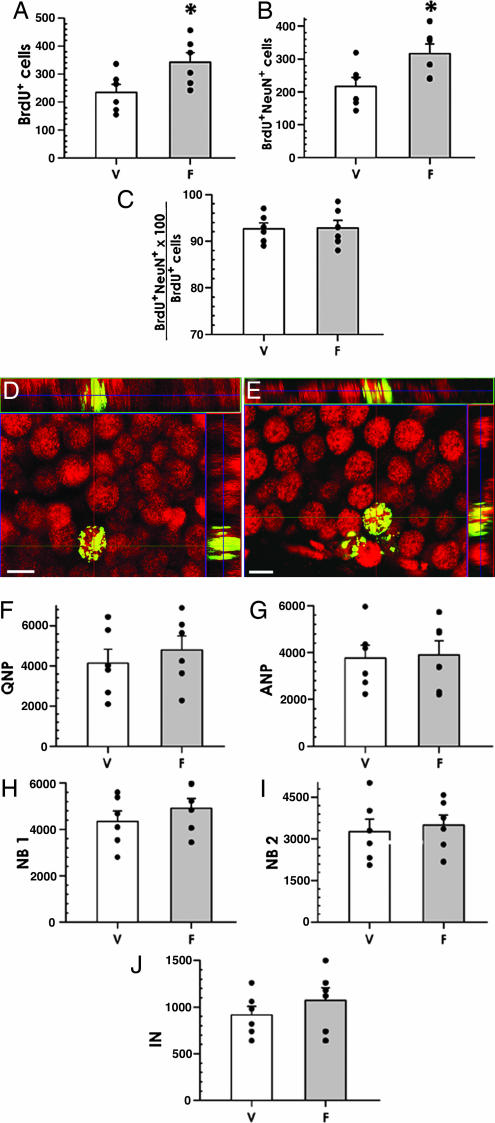Fig. 6.
Fluoxetine increases neurogenesis in the adult DG (30-day survival experiments). (A–C) Chronic fluoxetine treatment of adult mice, analyzed 30 days after BrdU administration. Fluoxetine increases the number of BrdU-positive cells in the DG (A), and the number of BrdU and NeuN double-positive cells (B); the fraction of such cells among total BrdU-positive cells remains the same (C). (D and E) Representative photomicrographs of DG from control (vehicle) (D) and fluoxetine-treated (E) animals show that new cells became neurons, shown by immunostaining for BrdU (green) and NeuN (red). The orthogonal projections are shown to confirm double labeling throughout the extent of positive cells. (Scale bars: 10 μm.) (F–J) Fluoxetine treatment does not increase the number of neuronal progenitors when analyzed 30 days after the treatment. The histograms show the data for the QNP (F), ANP (G), NB1 (H), NB2 (I), and IN (J) cells. Changes did not reach the level of significance in none of the categories. V, vehicle; F, fluoxetine. n = 6 per group. ∗, P < 0.05.

